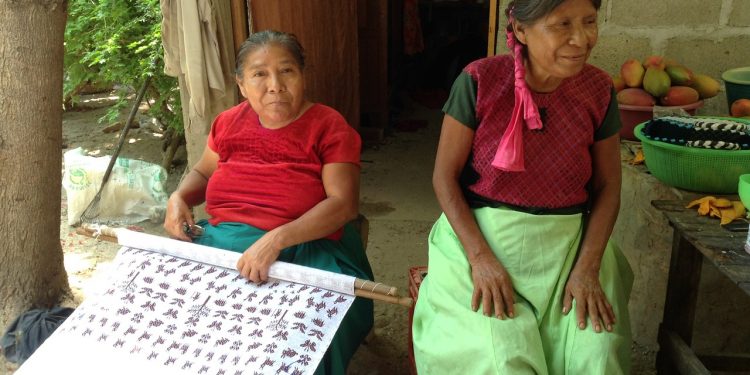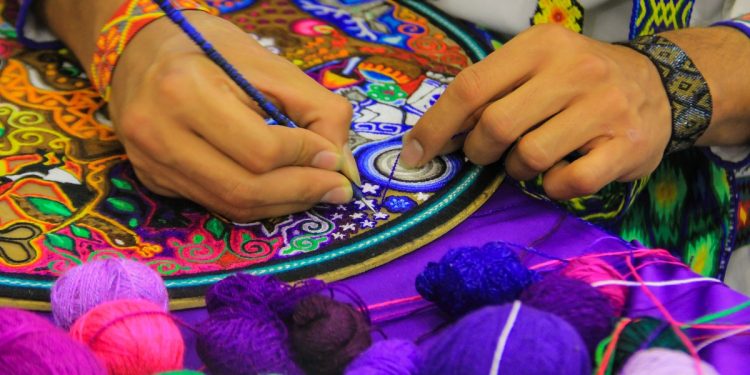In a related article, we commented on how the Mexican artisan market is undergoing tremendous change, and how Marianne Carlson founded a trade fair to support genuine Mexican artwork. This article shares advice about how to spot genuine Mexican art works and mitigate your chances of being sold imitations.
The value of any art work is, ultimately, in the eye of the beholder: how we perceive art, and how we respond in the presence of any art piece presented to us is a very personal matter. Genuine art works you purchase in Mexico will carry a woven narrative that describes the elements which brought the work into being — for example, the materials employed, the artisan’s technique, the traditions, its history and symbolic meaning — and all these formed through the hands of an individual artist who acts as a conduit between the elements. Art that means something to you personally is the kind of art you will never tire of enjoying.
When you’re purchasing art works in Mexico, it makes good sense to be forearmed with some knowledge about how to spot genuine Mexican art, so that you will take home something that embodies the elements of a true art piece and not a mass-produced reproduction masquerading as true Mexican art.
Ask questions that reveal provenance
When you’re in the market to purchase Mexican art works, ask questions about how the pieces you are offered came into being, and who the artist is. If the artist is not the seller, ask about how the seller is connected to the artist and listen carefully to the response you’re given. In some cases it could be a friend, fellow artisan, or family member. True art has a narrative that leads back to the elements, described above, which made it so. Imitations and mass-production faux art lacks this narrative.
Look for a signature
Check the piece for a signature, which is a form of branding in the Mexican art world. Note though, that the piece may not actually have been made by the person who signed it. Juana Gómez Ramírez, famous for her jaguars (pictured above), is the maestra in her family and even though she does not read or write she has her own signature. She may also sign the work of her brother, husband, and others in her family whose work meets her stringent requirements. This is a very common practice among families who work together, or in talleres (workshops) where there is a maestro teaching his techniques and designs to the apprentices. The signature is only one part of the overall revision process and should not be taken in isolation, because, for example, there are unscrupulous artists out there who sign Juana’s name to their copies.
Buy from the source, if you can
If you purchase direct from the artist’s home, you can be pretty certain that the work will be genuinely theirs. If it’s not signed, ask them to sign it. If an artist will not sign the piece it could be because they don’t write or because they didn’t actually make it. When you purchase art works at Feria Maestros del Arte, you can be almost certain that the work being sold has been made by the artist represented. The Feria is very strict when selecting its artists and if an artisan is discovered not selling their own work, he or she is dropped from the program.
A note about pottery
When pottery is manufactured in bulk, a process known as slip-casting is used—to learn more about the tell-tale signs of slip-casting, read this article. The sought-after thin-walled pottery of Mata Ortiz is all hand-coiled; if a pot offered to you in her name has been slip-cast, it is not an original Mata Ortiz pot. Collectors of Mexican pottery might not purchase pots with colored pigment because those pigments are a fairly recent addition; earth tones were used centuries ago when the pottery was first made by the Paquimé Indians. Some artists stay true to the old way, some decide to add a contemporary feel with some additional color.
How to Support Authentic Mexican Art
Visit the Feria de Maestros website at www.mexicoartshow.com and, whenever you purchase art in Mexico, verify that it’s genuine by asking questions and carefully checking the pieces you buy.
See Also: Buying Handicrafts in Mexico
Mexico in your inbox
Our free newsletter about Mexico brings you a monthly round-up of recently published stories and opportunities, as well as gems from our archives.



